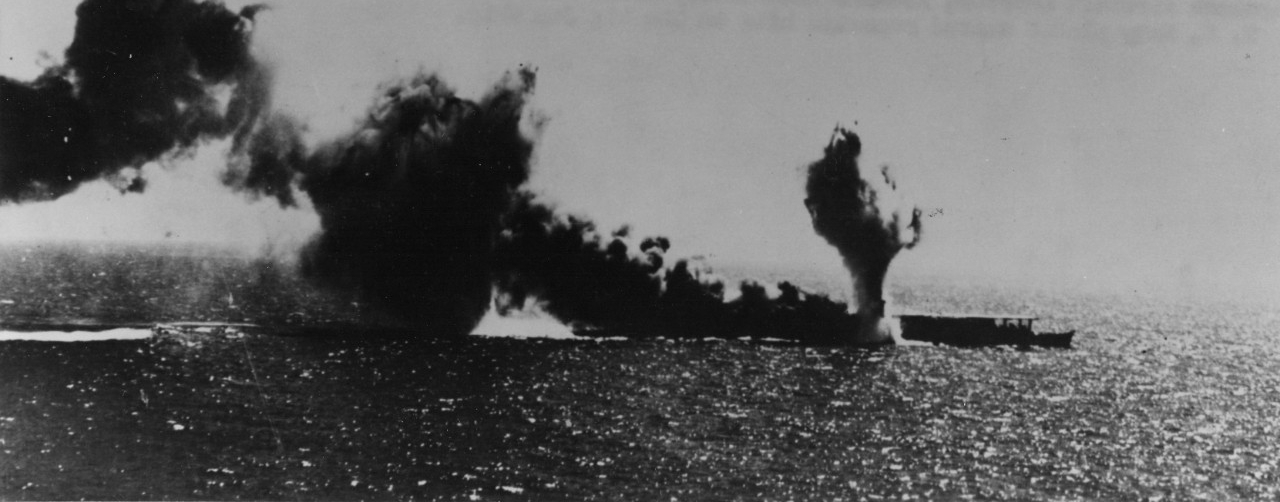
Battle of the Coral Sea
The Battle of the Coral Sea, fought in the waters southwest of the Solomon Islands and eastward from New Guinea, was the first of the Pacific War's six fights between opposing aircraft carrier forces. Though the Japanese could rightly claim a tactical victory on "points", it was an operational and strategic defeat for them, the first major check on the great offensive they had begun five months earlier at Pearl Harbor. The diversion of Japanese resources represented by the Coral Sea battle would also have immense consequences a month later, at the Battle of Midway.
The Coral Sea action resulted from a Japanese amphibious operation intended to capture Port Moresby, located on New Guinea's southeastern coast. A Japanese air base there would threaten northeastern Australia and support plans for further expansion into the South Pacific, possibly helping to drive Australia out of the war and certainly enhancing the strategic defenses of Japan's newly-enlarged oceanic empire.
The Japanese operation included two seaborne invasion forces, a minor one targeting Tulagi, in the Southern Solomons, and the main one aimed at Port Moresby. These would be supported by land-based airpower from bases to the north and by two naval forces containing a small aircraft carrier, several cruisers, seaplane tenders and gunboats. More distant cover would be provided by the big aircraft carriers Shokaku and Zuikaku with their escorting cruisers and destroyers. The U.S. Navy, tipped off to the enemy plans by superior communications intelligence, countered with two of its own carriers, plus cruisers (including two from the Australian Navy), destroyers, submarines, land-based bombers and patrol seaplanes.
Preliminary operations on 3-6 May 1942 and two days of active carrier combat on 7-8 May cost the United States one aircraft carrier, a destroyer and one of its very valuable fleet oilers, plus damage to the second carrier. However, the Japanese were forced to cancel their Port Moresby seaborne invasion. In the fighting, they lost a light carrier, a destroyer and some smaller ships. Shokaku received serious bomb damage and Zuikaku's air group was badly depleted. Most importantly, those two carriers were eliminated from the upcoming Midway operation, contributing by their absence to that terrible Japanese defeat.


